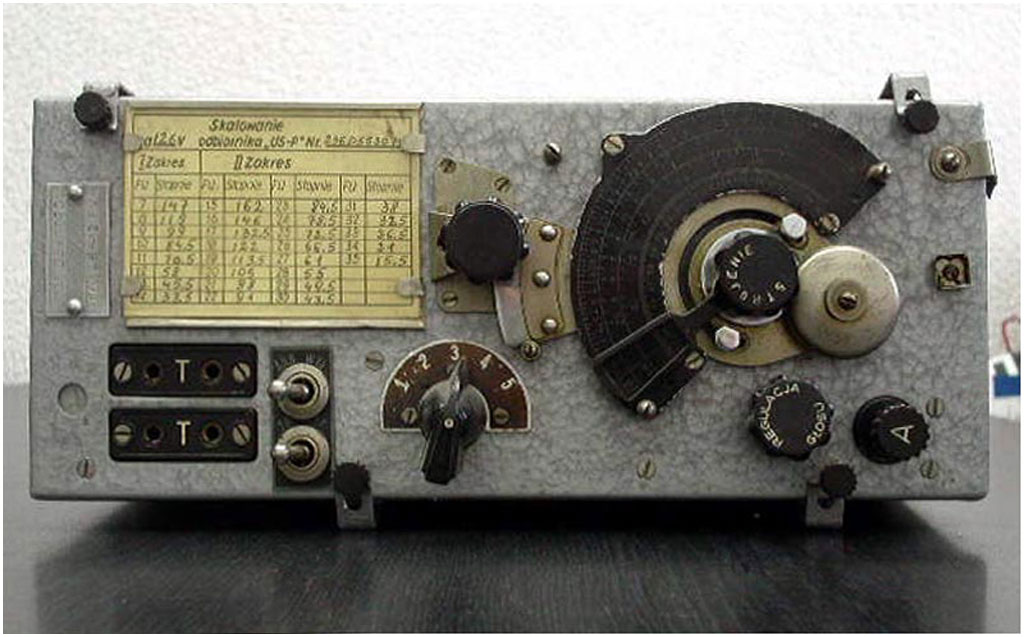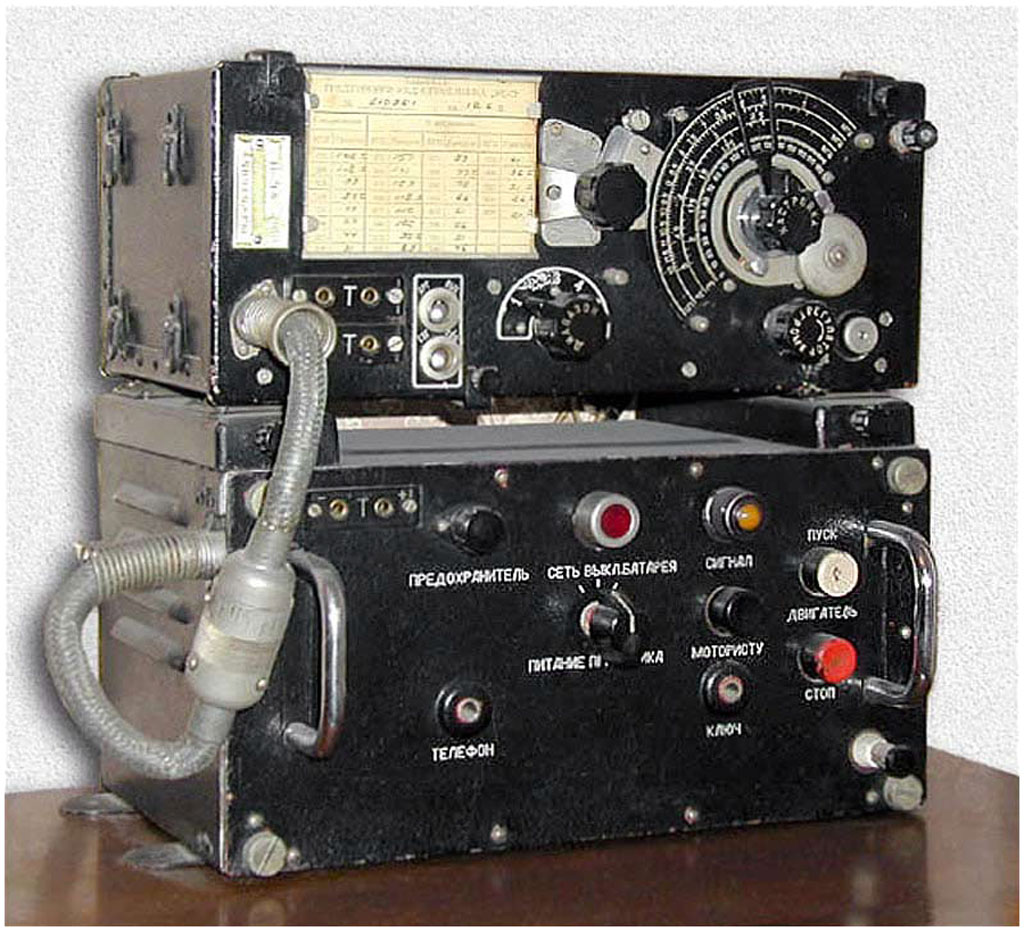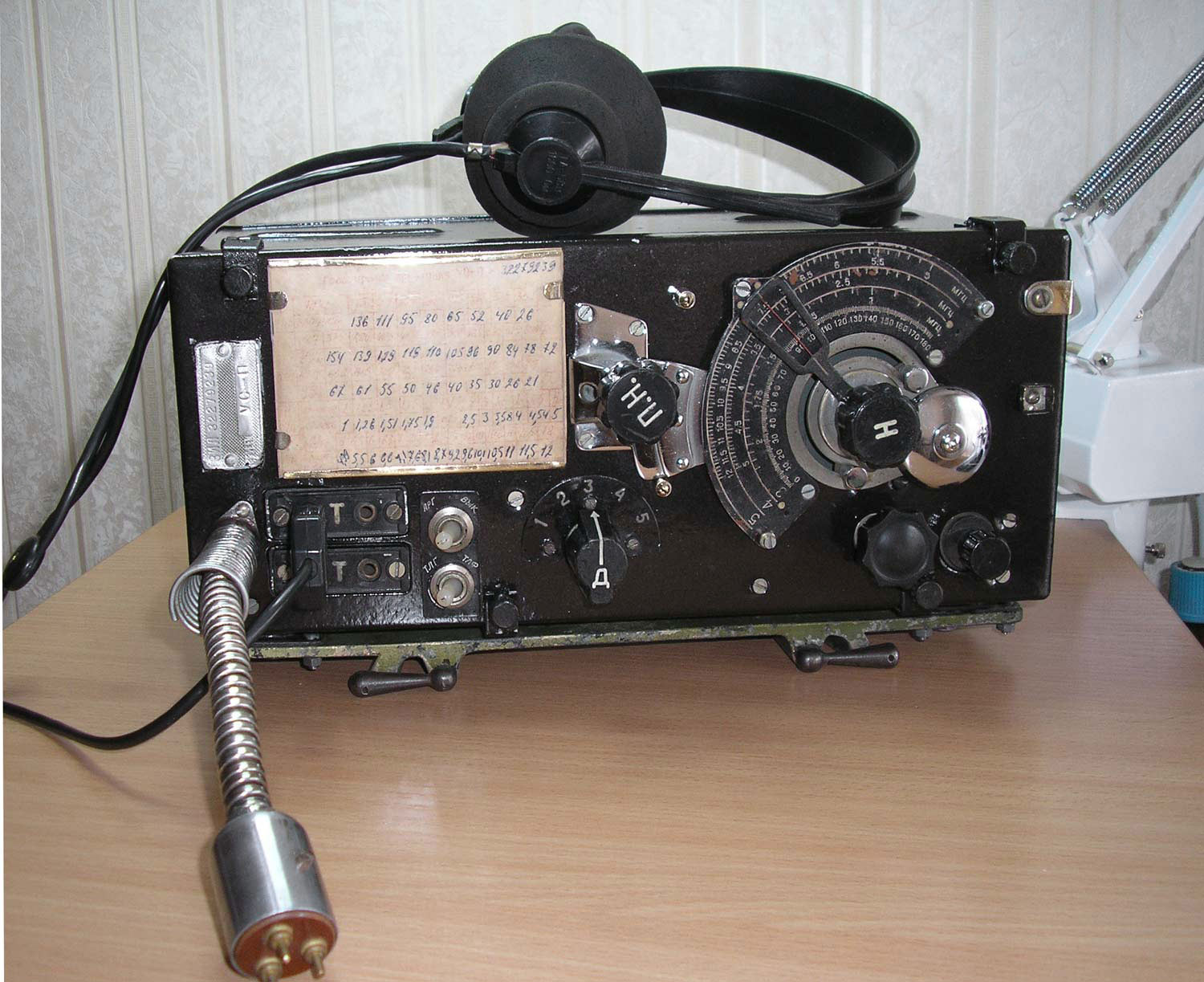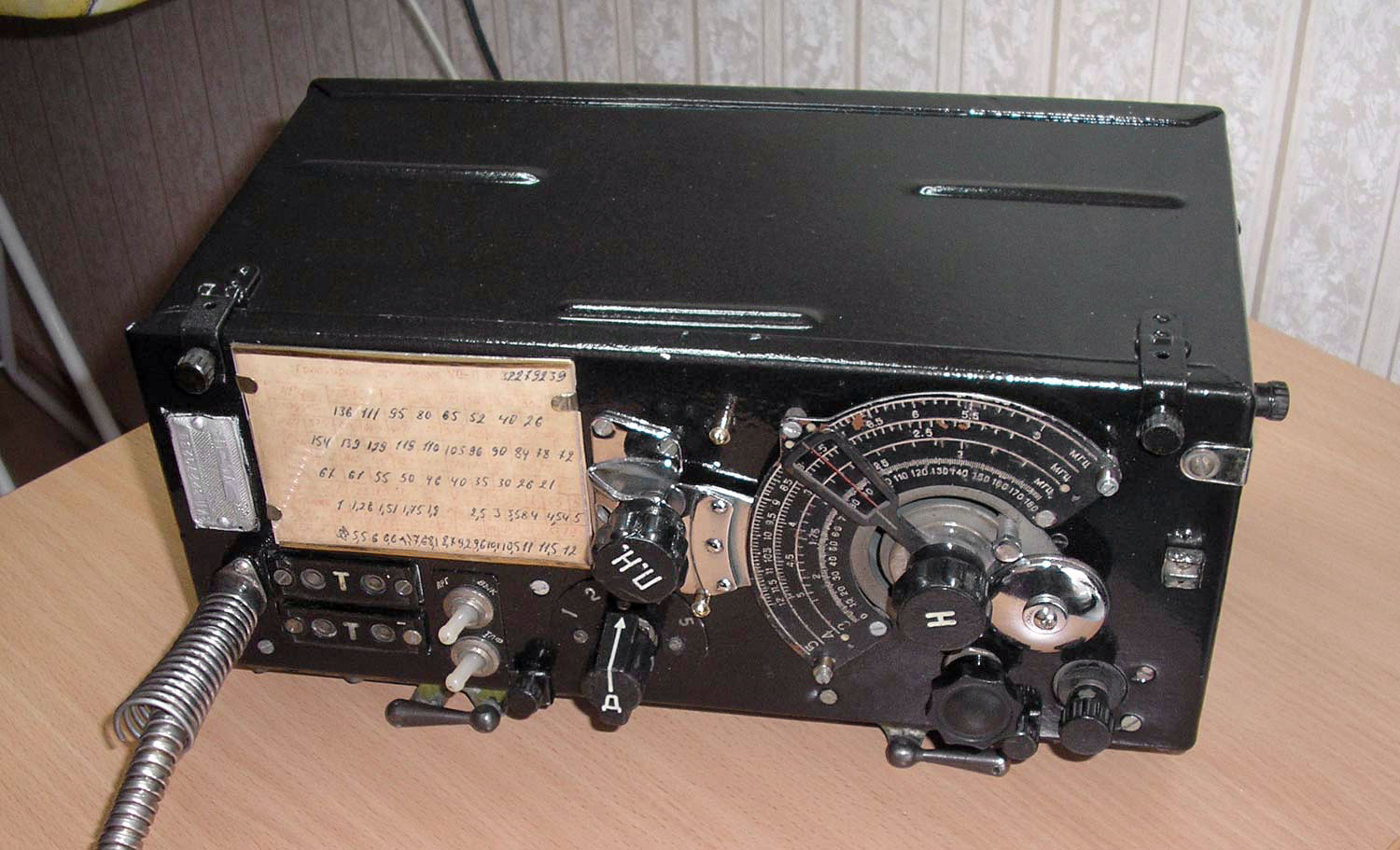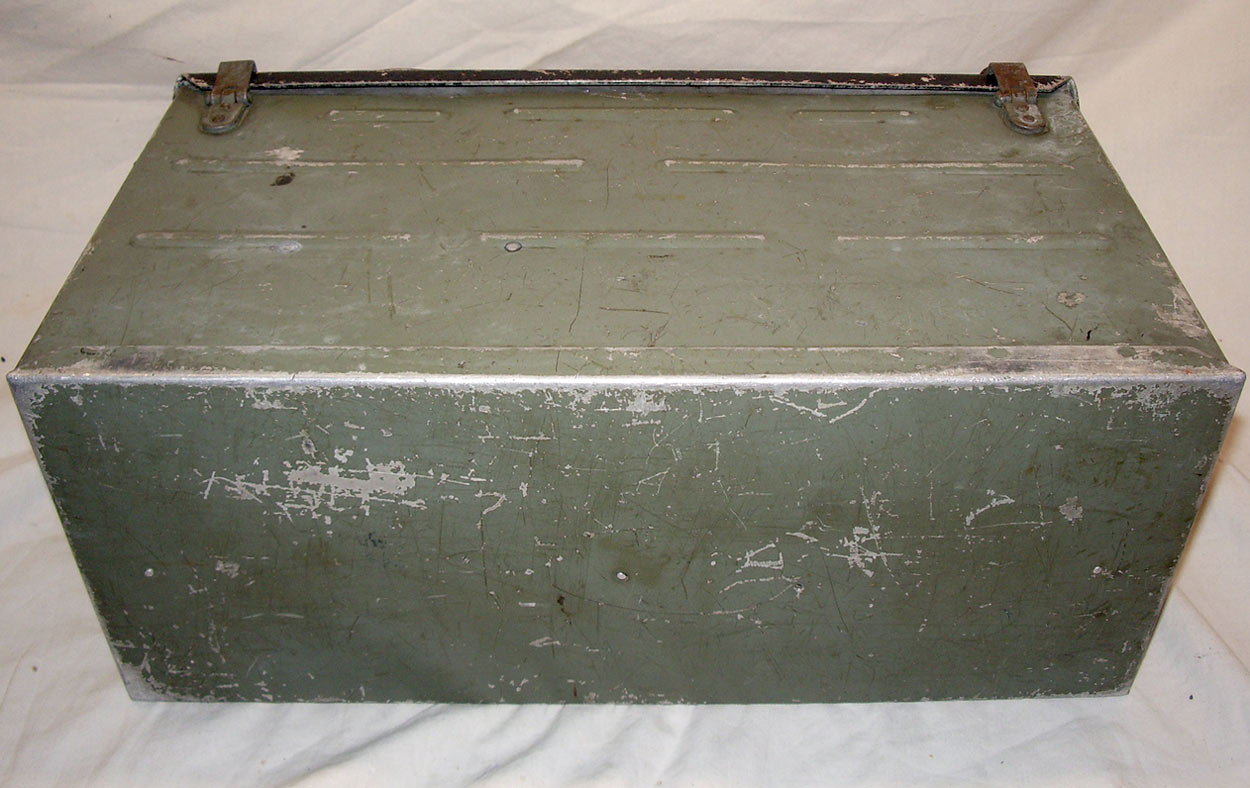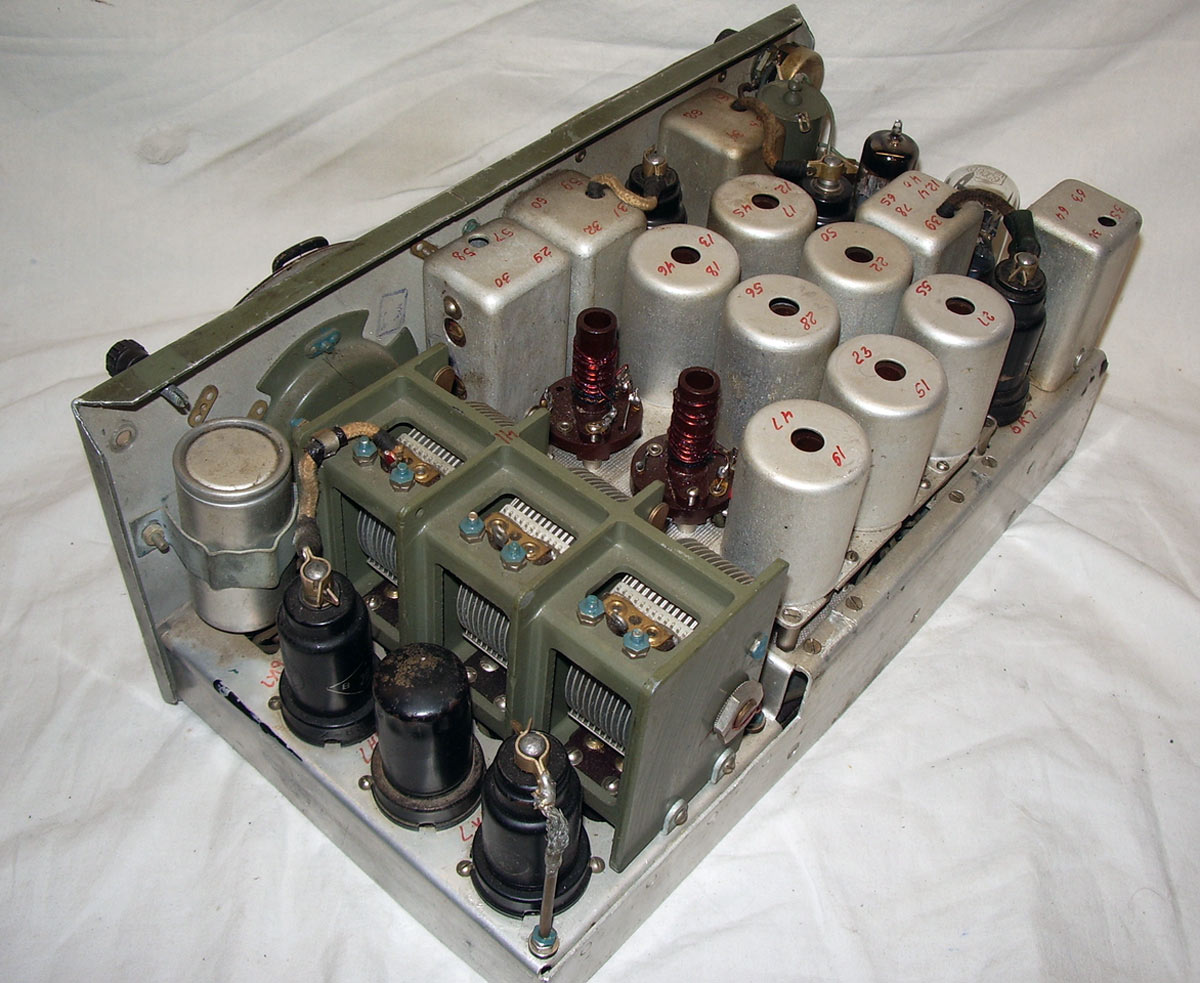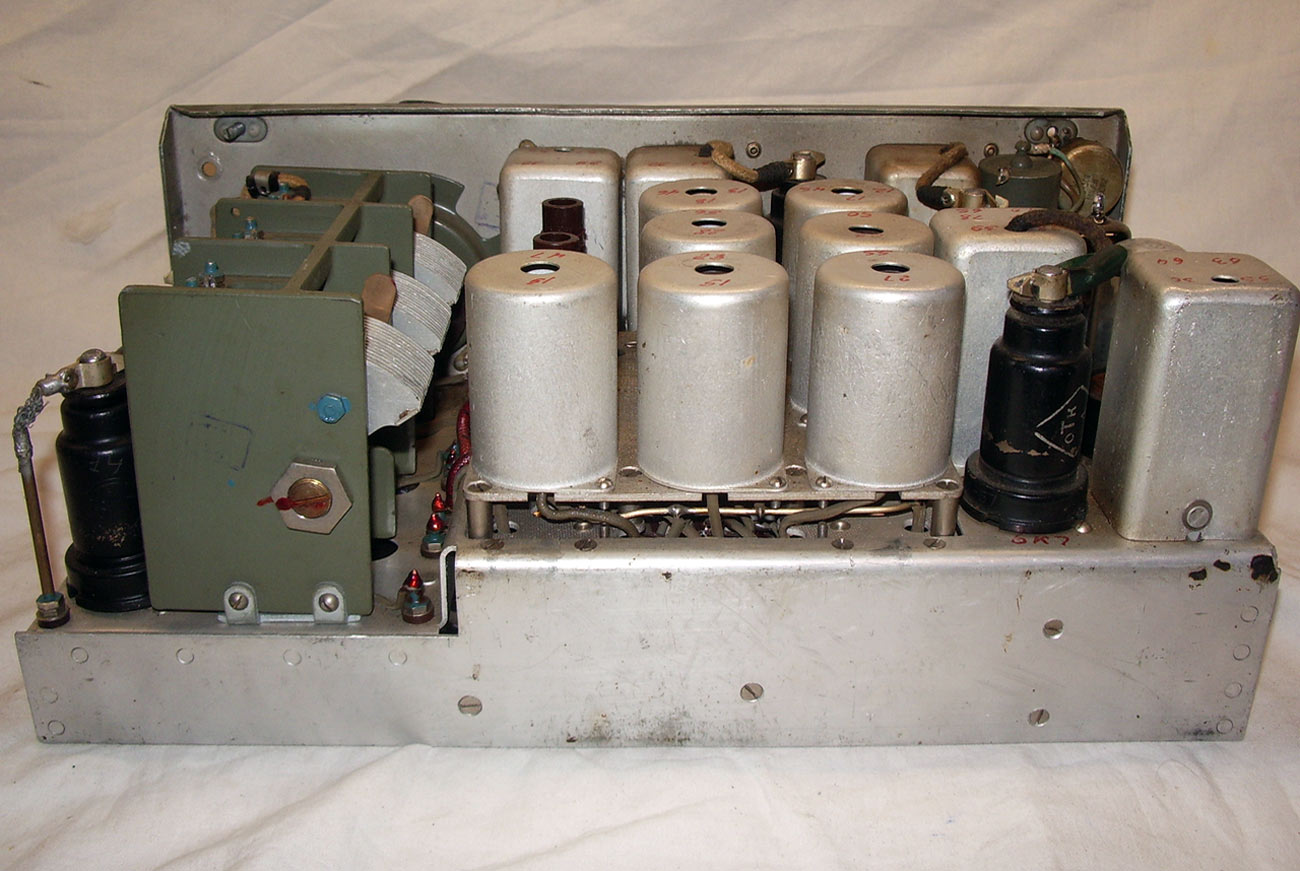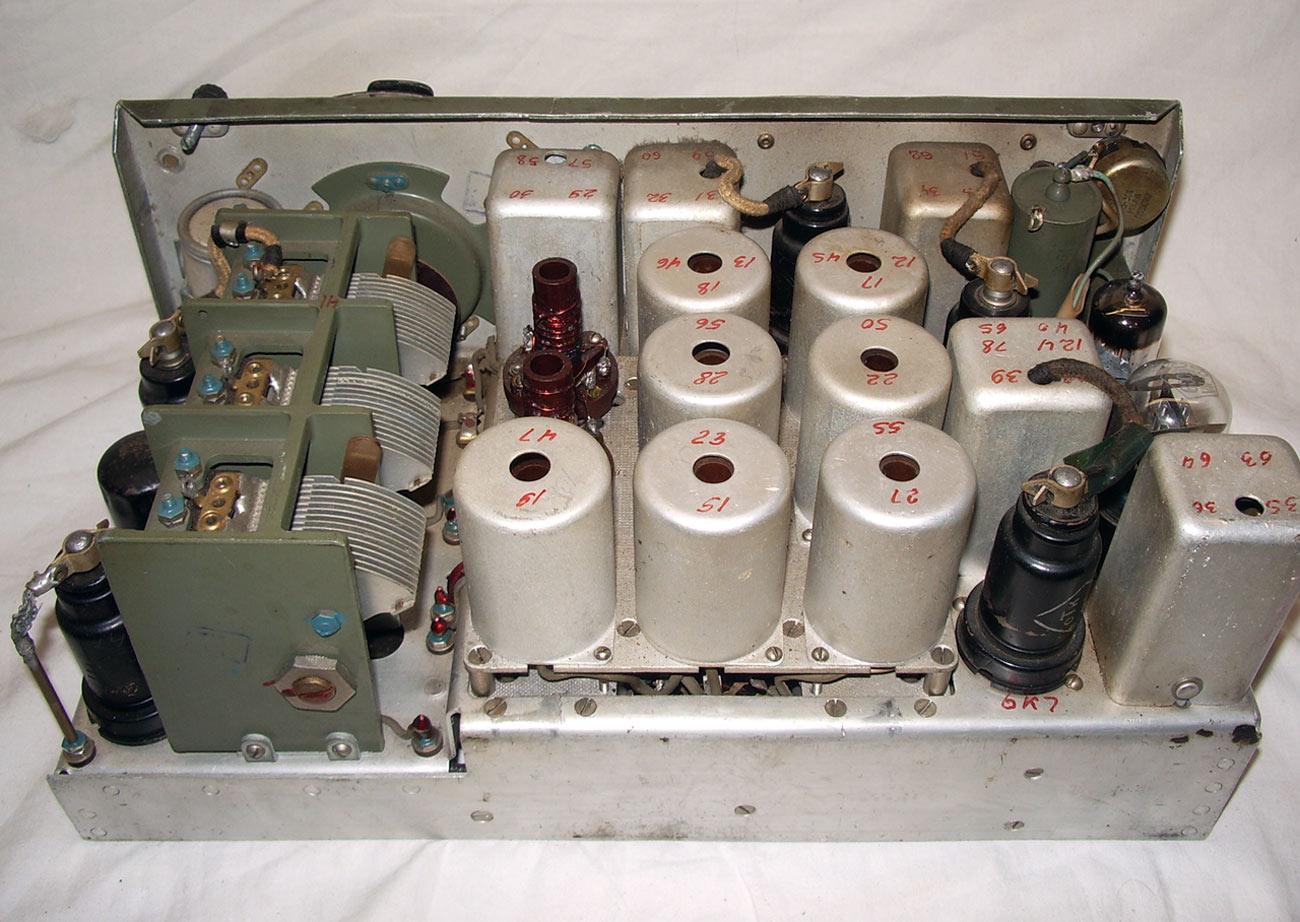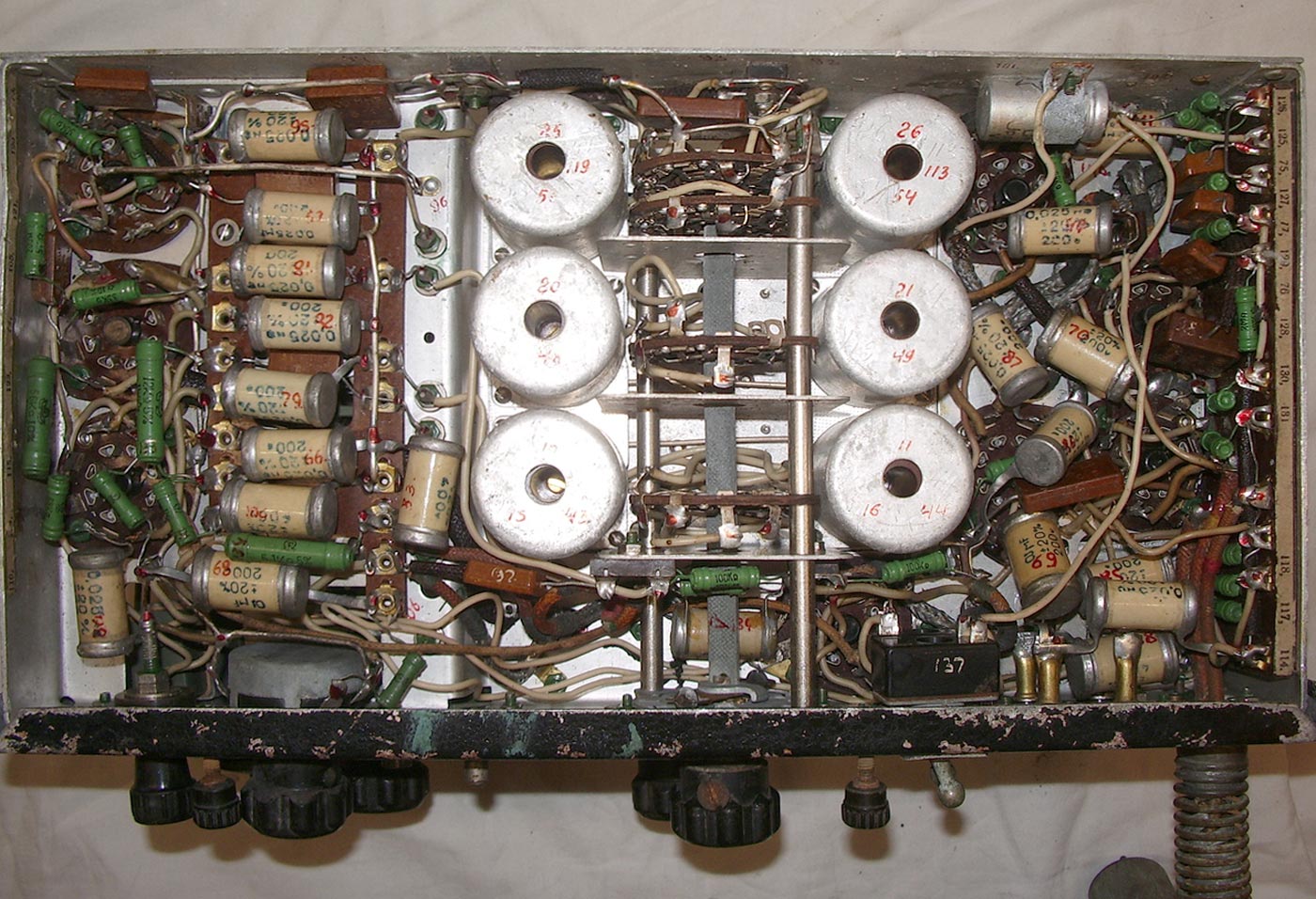Radio receiver `` US-P ''.
Receiving and transmitting radio equipment.The universal HF radio receiver "US-P" has been produced possibly since 1948. The receiver is designed to receive radio stations operating AM, tone modulation and telegraph (CW). It became the modernization of the US and US-1 receivers. The receiver was created for military aviation, but it was used as a liaison and even as a broadcast receiver. It is a superheterodyne with one frequency conversion, has a range from 173 kHz to 12 MHz, divided into five sub-bands. There is no graduation on the sub-bands '' I '' 173 ... 350 kHz and '' II '' 350 ... 875 kHz, it is replaced by an exact scale broken by 180 degrees. Ranges 3 - 4 - 5 have an overlap of 900..2150 kHz, 2150 ... 5000 kHz and 5000 ... 12000 kHz. The device has a UHF cascade on a 6K7 lamp, a converter with a local oscillator on 6A7 and 6K7 lamps, two UHF cascades on 2 6K7 lamps. IF = 112 kHz. The stages are covered by a delayed AGC system. On the 5th sub-band, UHF turns off the AGC circuit and works with maximum gain. The detector and AGC are assembled on a 6X6C lamp. The ULF is assembled on a 6K7 lamp, which is loaded onto an autotransformer from which a signal is sent to the telephones through the capacitance. Receiver sensitivity 10 µV in AM mode and 4 µV in CW. Selectivity on the adjacent channel when receiving in CW exceeds 90 dB, when receiving AM about 60 dB. Power is supplied from an umformer which, from a voltage of 25.5 V DC, provides a voltage of 220 V through the anode circuits and 6.3 V by heat, at a current of 0.6 A. The dimensions of the receiver are 113x331x204 mm. Weight without umformer 5.6 kg. The inscriptions on the control knobs are made with radioactive paint, the background of which is 15 ... 30 times higher than the natural one and constantly glowing in the dark with a beautiful greenish light, however, later the inscriptions were made with ordinary white paint.